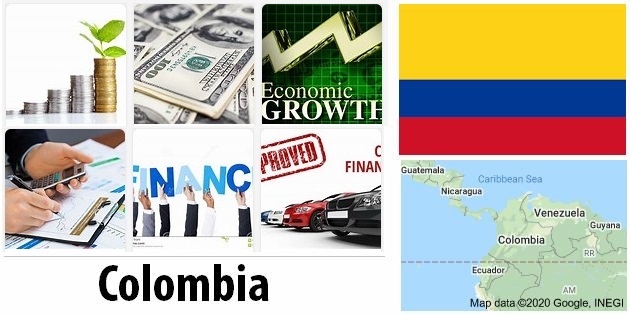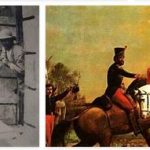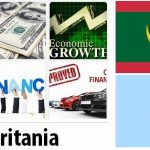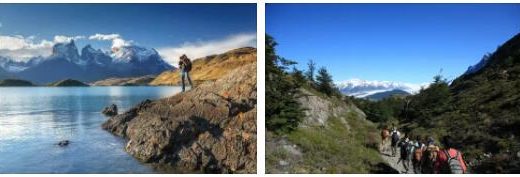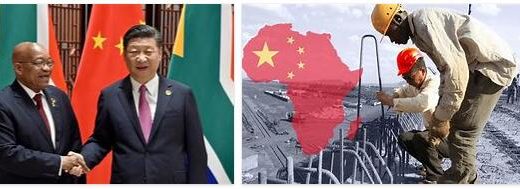Colombia Economy Facts
Economical overview
Colombia has a diverse and strong economy. It has traditionally been based on agriculture, but the industry is well developed. In recent decades, large-scale exploitation of oil and coal has also occurred. However, this development has been hampered by civil war, and drug trafficking and smuggling are in parallel with the legal economy.
Reduced violence and peace talks (see Current policy) have contributed to good economic growth and increased investment. The picture of Colombia has changed in part, from war-torn drug states (see Modern History) to attractive investment and tourism destinations. But major challenges remain, with, for example, large income gaps, unfair land distribution and lack of infrastructure. The security situation also continues to pose a constant challenge.
- Countryaah.com: Major imports by Colombia, covering a full list of top products imported by the country and trade value for each product category.
Coffee, tobacco and bananas were early Colombia’s major export products. A strong industrial base was built up when Colombia long protected its own production through high tariffs and other import barriers. For a quarter of a century until 1997, Colombia had uninterrupted growth. In Latin America, the country was alone about it and about not needing debt relief in the 1980s.
In the early 1990s, trade policy changed. Customs were lowered, foreign investors were given favorable terms, the economy was liberalized and many large state companies were sold out. Consumption increased and growth accelerated. Inflation, which was above 30 percent, began two decades of steady decline.
- Abbreviationfinder.org: Check this abbreviation website to find three letter ISO codes for all countries in the world, including COL which represents the country of Colombia. Check findjobdescriptions to learn more about Colombia.
IMF loans
Gradually, the economy slowed down, and in 1999 GDP fell. The currency, the peso, was allowed to flow freely, and inflation was attacked. A slow recovery of the economy followed. Loans from the International Monetary Fund (IMF) came against the promise of reduced budget expenditures, increased tax revenues, sales of more state-owned companies and increased trade with the outside world.
President Álvaro Uribe (2002–2010) tightened the economy. He raised some taxes to be able to increase military efforts against the guerrillas while reducing the budget deficit. Security improved in the cities, and more investors dared to invest in Colombia. In addition, oil prices rose during Uribe’s time in power (see Natural Resources, Energy and Environment).
GDP has generally increased since the turn of the millennium and was positive even in 2008–2009, which was the worst year of the global financial crisis. When the economy showed signs of slowing down after 2011, the central bank responded with Latin America’s lowest interest rate and President Juan Manuel Santos’s (2010–2018) government presented a stimulus package of SEK 16 billion.
Changing prices
The fluctuations in world market prices for important export products such as oil, coal and nickel have a major impact on the economy. The dependence on oil and coal has led to problems in recent years, as world market prices for both have fallen sharply. The coffee has also lost value while bananas have become an important export product. Colombia also sells a lot of cut flowers – not least roses – and cotton, sugar and tropical fruit are significant in exports.
Colombia signed a free trade agreement with the United States in 2006. The agreement ended up in the US congress because of concerns over violence against trade unionists in Colombia (see Labor Market). In May 2012, the agreement came into force but was followed by major protests in Colombia (see Calendar), where many feared that small farmers and small-scale industries would be eliminated.
Since August 2013, Colombia also has free trade agreements with the EU. For the EU too, the lack of protection for the unions was a sensitive issue. The EU negotiated the right to some transparency and inspection of conditions. But trade unions in Colombia are skeptical and say that the state does not live up to its commitments, and that the security situation in the country is still very poor. The EU agreement was also followed by extensive protests (see Calendar).
Illegal activities
Illegal trafficking in cocaine and marijuana covers several billion dollars a year. The drug is smuggled out of Colombia with mainly the US as a market. In return, large quantities of goods are smuggled into Colombia as part of money laundering from trafficking in drugs, weapons and people. The smuggling damages the legal business and makes Colombia’s normal economic development difficult.
According to experts, the value of money laundering can be as high as $ 17 billion annually, which is more than 5 percent of GDP and more than foreign direct investment.
FACTS – FINANCE
GDP per person
US $ 6,651 (2018)
Total GDP
US $ 330 228 million (2018)
GDP growth
2.7 percent (2018)
Agriculture’s share of GDP
6.3 percent (2018)
Manufacturing industry’s share of GDP
11.3 percent (2018)
The service sector’s share of GDP
57.8 percent (2018)
Inflation
3.6 percent (2019)
Government debt’s share of GDP
52.2 percent (2018)
External debt
US $ 124,364 million (2017)
Currency
peso
Merchandise exports
US $ 44,373 million (2018)
Imports
US $ 49,583 million (2018)
Current account
– US $ 12 908 million (2018)
Commodity trade’s share of GDP
28 percent (2018)
Main export goods
oil, carbon briquettes, coffee, gold, cut flowers
Largest trading partner
USA, China, Mexico, Brazil
2008
July
Betancourt among exempt prisoners
The army exempts Ingrid Betancourt (see June 2007), three Americans and eleven soldiers and police held hostage by Farc. The Colombian military has been able to track hostages using US satellites and can implement the exemption by pretending to be relief workers.
May
Farc founder dies, new leader appointed
The guerrilla announces that founder Manuel Marulanda has died in a heart attack. New leader will be Alfonso Cano.
AUC leaders are handed over
About ten leaders of the wounded right-wing militia are handed over to the United States where they are charged with drug crimes and money laundering. This probably means that the militia leaders will not be charged with human rights violations and thus will not reveal more about contacts with leading politicians. President Uribe says AUC leaders have broken the peace agreement and continued to direct their criminal activities from prison.
March
Air attack against Farc in Ecuador
Colombian military bombs a guerrilla camp in Ecuador, very close to the border. At least 17 rebels are killed, including one of Farc’s leader Raúl Reyes. This creates a diplomatic crisis with both Ecuador and Venezuela.
January
Chávez secures the release of prisoners
Venezuelan President Hugo Chávez, who for several months has mediated between the government and Farc, manages to get the left guerrilla to release six prisoners, including two politicians who have been held captive for six to seven years.
